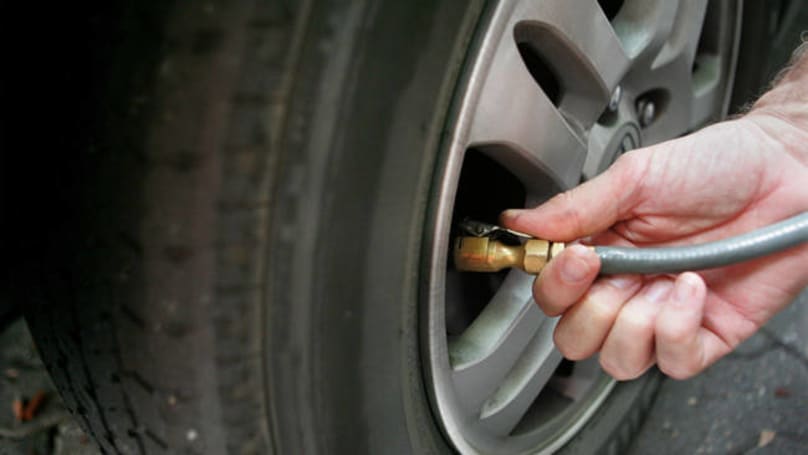
Why it's important to ensure your tyres have the right load and speed ratings

Your average 4x4 dual cab ute has a one tonne payload rating and can tow up to 3.5 tonnes of braked trailer. Many mid-sized commercial vans can also carry at least one tonne and large vans and their cab-chassis variants can carry even more.
These vehicles have robust chassis and powerful drivetrains to allow them to do this but another critical design factor is their tyres, or more specifically their load and speed ratings, which can easily be overlooked.
So, if you’re shopping around for a new set of tyres, it’s important to know what your vehicle’s tyre load and speed ratings are and what they mean in ensuring it can safely and legally continue to do what it’s designed to do.
Read more about weights and tryes
What are tyre load and speed ratings?
All tyres have them. They specify the maximum load a tyre is designed to carry, when inflated to its correct pressure and when not exceeding its maximum speed rating.
Therefore, you must adhere to tyre load and speed ratings as recommended by your vehicle’s manufacturer, because fitting tyres with lower ratings is illegal and dangerous.
Think about it. A tyre that’s exceeding its load and speed ratings is an accident waiting to happen. The excessive load weakens the tyre’s internal reinforcement causing undue flexing, distortion and poor handling. This overloading, along with excessive speed, can also generate enormous heat.
This evil combination greatly increases the chance of a tyre rupture or ‘blow-out’ with potentially disastrous consequences. Your vehicle could be impounded by police or transport authorities, your insurer will reject any claim for damages and you could be held legally liable for any damage, injury or death caused as a result.
Where to look for your vehicle’s tyre load and speed ratings

This is shown on its tyre placard, which is usually displayed in the driver or front passenger door openings or on the inside of the fuel filler flap. They are also displayed on tyre sidewalls and in the vehicle owner’s manual.
The tyre placard displays not only the wheel and tyre sizes specified for the vehicle but also recommended cold tyre pressures for both loaded and unloaded driving (we’ll get to pressures later on) plus maximum load and speed ratings.
The load rating is identified by a two or three-digit number and the speed rating by a single letter. These numbers and letters correspond with respective loads and speeds shown on internationally recognised indexes, which are readily available online.
These two ratings are displayed close together because they are of equal importance in the tyre’s performance. For example, the original equipment tyres fitted to CarsGuide’s Ford Ranger XLT long term test vehicle display 112T. That’s a load rating of 112 (which equates to 1120kg per tyre) and speed rating of T which is 190km/h.
It’s comforting to know that these ratings allow large safety margins, given that the Ranger’s maximum rear axle load rating is 1850kg and the combined load rating of its two tyres is a much higher 2240kg. The same applies to the 190km/h maximum speed rating - in a Ford Ranger?
On some commercial vehicles the load rating might consist of two numbers separated by a forward slash. In that case, the first number represents the tyre load rating when the vehicle is equipped with single rear wheels, while the second is the load rating required when dual rear wheels are fitted.
Tyre placards often display information about more than one wheel/tyre combination suitable for that vehicle. If so, a quick look at the relevant info displayed on the tyre sidewall will confirm which size is fitted to yours.
Can you fit tyres with higher load and speed ratings?

Yes, but that doesn’t mean you can increase your vehicle’s payload and towing capacities as a result. Not exceeding its standard load ratings is always the best policy from legal and insurance standpoints.
You also need to be sure that a tyre with a higher load rating does not have a lower speed rating. This can occur sometimes on tyres with, for example, aggressive tread patterns designed for extreme off-road service.
Tyres with higher load and speed ratings can be beneficial in some ways. They should run cooler when subjected to the same loads and speeds as tyres with lower ratings, be less prone to punctures and produce higher mileages.
However, their stronger and therefore stiffer and heavier construction, particularly in terms of light commercial vehicles, can also create a harsher and less comfortable ride.
Correct tyre pressures are critical

Tyre load ratings are based on the assumption that cold tyre pressures recommended by tyre manufacturers are maintained, because they are critical in allowing tyres to evenly distribute your vehicle’s payload and tow-ball download through their sidewalls and across their tread faces.
So, you should always check and adjust your tyre pressures at least once a month and always before you set off with a heavy load. These checks should always be done when the tyres are cold, either before you leave home in the morning (if you have a small compressor handy) or after having driven no further than your local service station.
That’s because rolling tyres generate heat and as the air inside gets hotter it expands and raises the pressures, resulting in false ‘cold’ readings. Remember, cold checking is critical in maintaining correct tyre pressures and therefore their load and speed ratings.










Comments